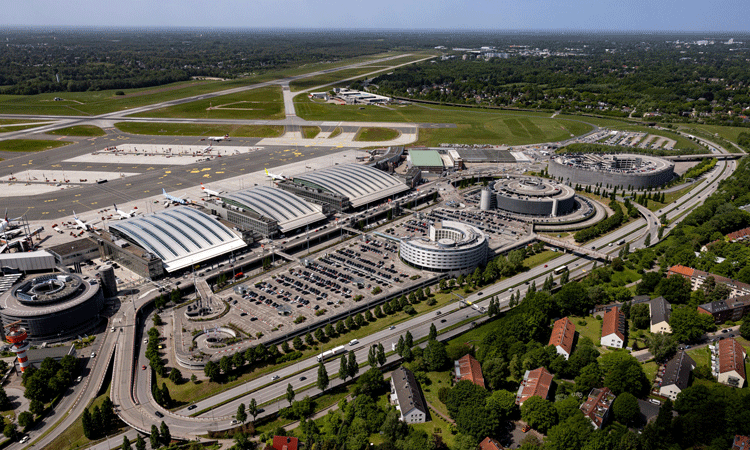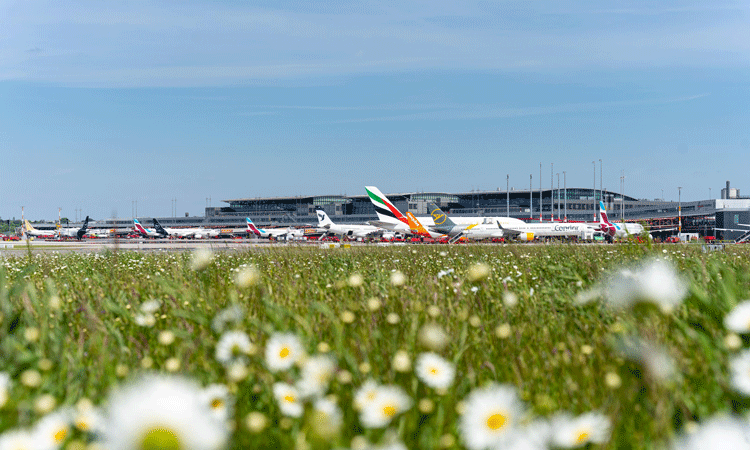Changes to airports’ passenger experience – now and in the future
- Like
- Digg
- Del
- Tumblr
- VKontakte
- Buffer
- Love This
- Odnoklassniki
- Meneame
- Blogger
- Amazon
- Yahoo Mail
- Gmail
- AOL
- Newsvine
- HackerNews
- Evernote
- MySpace
- Mail.ru
- Viadeo
- Line
- Comments
- Yummly
- SMS
- Viber
- Telegram
- Subscribe
- Skype
- Facebook Messenger
- Kakao
- LiveJournal
- Yammer
- Edgar
- Fintel
- Mix
- Instapaper
- Copy Link
Posted: 16 November 2023 | Michael Eggenschwiler | CEO | Hamburg Airport | No comments yet
In this exclusive article, written by Hamburg Airport’s CEO, Michael Eggenschwiler, Michael writes about the changes to airports’ passenger experience, from both a past and future standpoint.


When we are speaking about passenger experience at airports or when travelling by air, we regularly differentiate between our personal, subjective impression and the factual measured data, collected from professionally organised research. What is the correct baseline, when discussing passenger experience? Well of course, both views are right but maybe one is more ‘right’ than the other?
It is not easy to define on which base we should be debating this question – undoubtably, one of the most important for our industry. Before looking into more detail at aviation’s recovery after COVID-19, a glance at today and a view into the future, let me give you one example of how research and reality do not always coincide.
We are all aware that our industry – like many others as well – needs to decarbonise its operations. In surveys everybody agrees to this fact, and everybody is in strong support for measures to be taken, and this comes with a price. This is one side of the coin.
The other side are the number of passengers who pay a premium on their journey to compensate for their carbon footprint. However, the number of passengers paying does not correspond with results of the surveys. This is also a fact. To make my point clear, passenger experience has many aspects because it includes passengers travelling and the stakeholders providing services to passengers. Anyhow, let us look at the factors influencing passenger experience.
Recovery from COVID-19 in 2022
We are all aware of how strong our industry was hit by the worldwide measures imposed during COVID-19, from 2020 through to 2022. We were basically grounded for a long period of time, not knowing when the recovery was going to become a reality and at what pace.
In this situation, the economic results were disastrous; additional loans or equity were needed and staff were laid off. Once traffic started to pick up, we were confronted with the many interfaces that did not really work as we were used to prior to COVID-19. Planning became very difficult, due to short pre-booking periods and in many areas of our industry, without the necessary staff onboard. At the same time, we saw a strong demand with different traffic patterns and new peaks; we saw larger aircrafts and at least the former level seat load factors. Above all, we had to realise that passengers also had to learn procedures at airports again, even though these remained the same as pre-COVID-19.
In conclusion, we may say that our industry had a jump start in getting back on track, but honestly speaking, positive passenger experience was not where it should have been – for neither the passengers themselves, nor for our staff.


Where are we today, in 2023?
Sure enough, we have done our homework in preparation for 2023. Operations have become much smoother, and irregularities are no longer a daily reality. We are on a learning curve as an industry, and we know how important the use of technology is to cope with daily operations. We have seen the use of new technology in our security lanes, with our check-in systems and baggage-drop machines. We are seeing new concepts in Food & Beverage, as well as new offers in duty-free areas.
We are seeing a high demand for travel. At the same time, we are experiencing a different mix of passengers: there is less business travel, a sustained level of leisure travel and more ‘visit-friends-and-relatives’ (VFR)/more so-called ethical travellers. At the same time – at least in Germany – we are in a very lively debate about climate change and what it implies for travel by air. This brings me back to my remark earlier, about the real wish to be mobile versus the implied cost for air travel due to environmental questions.
Taking a conclusion for 2023, we can clearly state that our industry is back on track, passengers are back, operations are a lot smoother than in 2022, but if we are honest, we have not yet got the ‘fun-factor’ back into airports. High demand and high peaks are giving us the feeling of ‘squeeze’ when travelling by air.
Where do we want to be in the future?
We know for a fact that mobility is part of our life, it will not go away, and we will have nobody take it away from us. We all know that our industry – like many others – must decarbonise the way we operate, a fact known to passengers. And we know – certainly speaking for Germany – that we shall continue to be in need of well-trained staff for the entire industry. Therefore, my personal conviction is, we shall need a much stronger and faster approach to solutions and applications which include innovation, automation and standardisation.
I explicitly do not use the word digitalisation, as this means everything and at the same time nothing – a buzz word to me. To provide a seamless service to our passengers deserving of the name, we shall need to apply technology in all areas over a short period of time, not to reduce staff, but to make sure that service is provided at an adequate level.
The list of opportunities are long. Let me mention some examples that aren’t too far off. On our tarmacs we will see integrated systems deploying resources for loading/unloading; baggage transport; fuelling and de-icing just to mention a few. Automated transport will also become a reality, as well as self-driving snowploughing in the winter. At terminals, we shall see more machines for check-in, baggage drop, for security lanes and for boarding gates. Much of these will be combined with biometric recognition systems.
Many of these services will become interlinked, with passengers will see their check-in procedure including a slot to drop bags, a slot to go through security and a queuing point for boarding the aircraft. Similarly, you will always know where your checked-in bag is and be notified early and in detail, in case it does not turn up where it should. Along with these features for the actual passenger processes, we shall be experiencing many more connections with car parking, car rental, food outlets and duty-free offerings. As I mentioned, this is not a comprehensive list of the options we may be seeing soon. Irrespective of the fascination of these technological applications we must never forget that passengers are humans, are social creatures and thus need social contact despite all this automation. Having said this, we must maintain a strong presence of dedicated staff to support passengers along their journey through the airport. This is a must and travelling by air will always be special and emotional; it cannot be without a strong human touch.
My message for the future is for us to find the right balance between seamless travel, efficiency, technology and personal contact. It is easier said than done. Let us, as an industry, take this approach and let us be ahead of all the other means of transport. Travel by air is something special – it always has been, and it always will be – for all of us.


Starting his professional carrier at Crossair in various management positions, Michael took over a senior management role at Swissair. He was a Member of the Executive Board at Swissair, later being responsible for Sales and Marketing in Swissair’s home market Switzerland.
From 2007 to 2010 Michael acted as President of German Airports Association ADV and is currently the Board Member of the German Airports Association ADV, Bundesverband Deutsche Luftverkehrswirtschaft BDL as well as an Advisory Board Member NordLB, Hamburger Sparkasse and TALANX.
Related topics
COVID-19, Emissions, Passenger experience and seamless travel, Passenger volumes


















